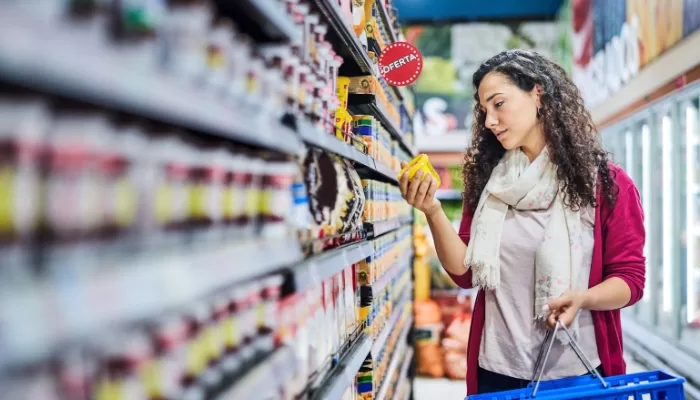Brand Strategy
The New Era of Loyalty Programs: What Brands Need to Know

- Brands are increasing consumer loyalty with innovative initiatives that combine technology, personalisation, and strategic relationships.
- Uber’s relationship with Ascenda enables global consumers to redeem reward points for Uber credits, hence increasing user engagement.
- To satisfy escalating customer expectations, loyalty programs are increasingly incorporating gamification and AI-powered personalised experiences.
- Despite implementation hurdles, creative loyalty programs have the potential to greatly improve customer retention and long-term economic performance.
In today’s increasingly competitive market, brands are continuously looking for new methods to engage and keep customers. Customer loyalty programs are one of the most effective strategies at their disposal. These projects provide prizes to encourage repeat purchases and foster deeper consumer relationships. However, standing out in a congested industry takes more than simply typical loyalty programs. To genuinely captivate customers’ attention and loyalty, brands must embrace cutting-edge technology and provide personalised experiences.
Redefining Loyalty Through Technology and Partnerships
Brands are now focussing on increasing customer loyalty and streamlining rewards redemption, recognising the importance of providing a seamless and engaging experience for retention. Companies are fostering closer connections with their customers by merging partnerships and harnessing technology.
A prime example is Uber‘s relationship with Ascenda, which allows consumers all around the world to exchange reward points for Uber credits. This collaboration leverages Ascenda’s worldwide premium rewards network, providing FinTech and banking clients with a straightforward way for their customers to use credits towards Uber services such as rides and food delivery via Uber Eats. With Uber operating in more than 70 countries and facilitating more than 30 million rides every day, this change is expected to greatly improve user engagement and happiness across all platforms.
Expanding Reach through Strategic Collaborations
This strategic partnership enables Uber to offer its services to Ascenda’s broad network of FinTech and banking clients, who serve over 100 million high-value customers. Uber credits, once added to an account, can be used in any country where the service is offered, making it a highly relevant offering for international travellers as well as a valuable section of FinTech and banking customers.
The convenience of the redemption process is an important aspect of our collaboration. Consumers can redeem Uber credits through their online banking site or app, and the transfer is quick. These credits can then be used instantly for transportation or food delivery, either in full or in part across several transactions, boosting the consumer experience with a smooth, frictionless process.
The Evolution of Loyalty Programs
Loyalty programs have grown greatly since their early days of awarding points or miles for purchase or travel. Today, brands are using gamification, artificial intelligence (AI), and personalised marketing to make their programs more engaging and lucrative. By harnessing these technologies, brands may not only provide rewards but also create unforgettable experiences for their customers.
The Power of Personalisation
Personalisation is at the heart of modern loyalty schemes. Understanding their customers’ tastes and behaviours enables brands to provide targeted rewards and experiences that are more likely to resonate. A fashion firm, for example, may make personalised recommendations based on a customer’s purchasing history, whilst a vacation company may offer tailored itineraries depending on the customer’s likes and destinations. This personalised approach illustrates that brands appreciate their clients as individuals and are dedicated to satisfying their unique requirements.
The Role of Gamification
Gamification is another effective method that firms are implementing to improve their loyalty programs. Adding game-like components such as points, badges, and leaderboards can make earning and redeeming prizes more enjoyable and engaging. When customers believe they are playing a game, they are more likely to participate regularly and share their experiences with others, resulting in increased engagement and loyalty.
Leveraging Technology for Seamless Experiences
Technology is playing an important role in the evolution of loyalty programs. Mobile apps, wearable gadgets, and artificial intelligence are being leveraged to deliver more seamless and personalised experiences. Customers may easily manage their rewards status, spend points, and receive personalised offers using mobile apps. Wearable gadgets can incorporate loyalty programs into daily life, allowing customers to earn points for physical activity. AI, on the other hand, can analyse customer data and predict preferences, allowing firms to provide more relevant and targeted rewards.
Success Stories from the Loyalty Space
Innovative loyalty programs are already proving successful for brands across a wide range of industries. For example, Albertsons Companies reported a considerable increase in digital engagement, with digital sales increasing by 24%, thanks to the success of its loyalty program. Six Flags, which operates theme and water parks, has created a Roblox metaverse experience with a rewards scheme. Users can earn virtual currency and exchange it for real-world incentives and activities at Six Flags theme parks.
Similarly, JCPenney just launched its Rewards and Credit Program, a free loyalty program that has garnered more than 20 million users. The program doubles members’ points and provides guaranteed payback each year, guaranteeing customers receive concrete benefits for their loyalty.
Challenges and Opportunities
While new loyalty programs have enormous potential benefits, they are not without obstacles. Implementing and managing these programs may be costly, so brands must ensure that their loyalty programs are simple for customers to comprehend and apply. Despite these limitations, marketers have numerous chances to innovate in the loyalty space. By adopting personalisation, gamification, and technology, brands can provide more engaging and rewarding experiences for their customers. This, in turn, can result in improved consumer loyalty, repeat purchases, and, eventually, long-term business success.
To summarise, the future of consumer loyalty depends on providing personalised, seamless, and pleasurable experiences that go beyond traditional rewards. Brands that successfully include these features into their loyalty programs will not only retain existing consumers, but also attract new ones, distinguishing themselves in an increasingly competitive industry.

















































